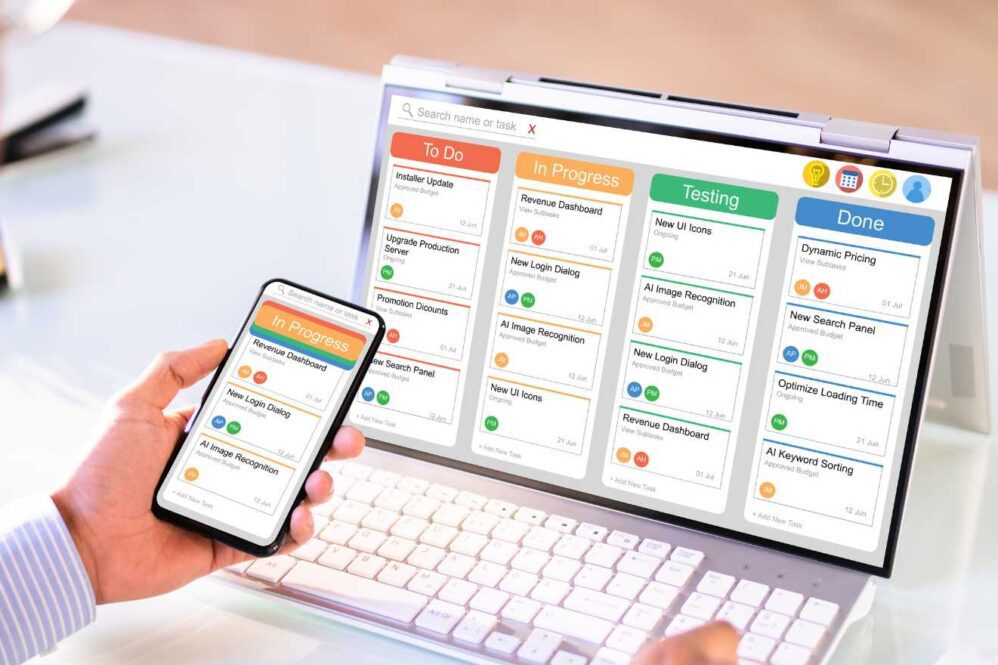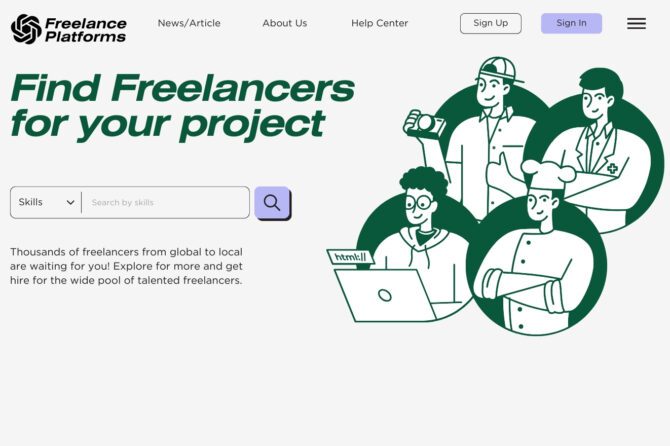Table of Contents
Understanding Project Scope
Accurately defining the project scope is a critical first step in cost estimation for a WordPress website development project. It involves gathering comprehensive requirements from the client to understand their goals, objectives, and desired features for the website. This process helps identify the project’s complexity, which directly impacts the overall cost estimation.
During the project scoping phase, it’s essential to have open and clear communication with the client. Ask detailed questions to understand their business, target audience, and website’s purpose. Determine whether the project involves building a new website from scratch or migrating and redesigning an existing one. Identify specific requirements such as e-commerce functionality, custom plugins or integrations, multilingual support, and any unique features or functionalities.
Clearly defining the project scope also involves estimating the project timeline. Factors such as the website’s complexity, the amount of content to be migrated or created, and the client’s desired launch date all play a role in determining the project duration. Establishing realistic timelines from the outset helps manage client expectations and ensures a smoother development process.
Website Requirements Gathering
Gathering comprehensive website requirements is a crucial step in accurately performing project cost estimation. This process involves various techniques to understand the client’s needs, goals, and expectations for the WordPress website.
One effective method is conducting in-depth interviews with key stakeholders, decision-makers, and end-users. These interviews allow you to gain insights into the website’s purpose, target audience, desired functionality, and overall vision. Prepare open-ended questions that encourage detailed responses and uncover any underlying requirements or pain points.

Surveys can also be a valuable tool for gathering quantitative and qualitative data from a broader audience. Design surveys that target specific user groups or segments, allowing you to gather feedback on their preferences, expectations, and desired features for the website.
Facilitated workshops or collaborative sessions can be highly beneficial, especially for complex projects. These interactive sessions bring together stakeholders, subject matter experts, and your team to collaboratively explore requirements, brainstorm ideas, and prioritize features. Visual aids, such as wireframes or prototypes, can be used to facilitate discussions and gather feedback.
During the requirements-gathering process, it’s essential to identify and categorize the must-have and nice-to-have features. Must-have features are critical to the website’s core functionality and success, while nice-to-have features are desirable but not essential. Prioritizing features helps allocate resources effectively and ensures that the most important requirements are met within the project’s budget and timeline.
Content requirements should also be thoroughly assessed. Determine the types of content (text, images, videos, etc.), the volume of content, and any specific formatting or structuring needs. Identify existing content that needs to be migrated and any new content that needs to be created or sourced.
Defining user personas and use cases can provide valuable insights into the target audience’s needs, behaviors, and goals. User personas represent fictional characters that embody the characteristics, motivations, and pain points of different user segments. Use cases describe specific scenarios or tasks that users will perform on the website, helping you understand the required functionality and user experience.
By gathering comprehensive website requirements through these techniques, you can develop a clear understanding of the project’s scope, complexity, and specific needs, enabling you to provide an accurate cost estimate and ensure a successful WordPress website development project.
Cost Estimation – Website Development Costs
Performing the cost estimation for the development costs for a WordPress website project is a crucial step that involves evaluating various factors. The complexity of the website, the need for custom functionality, and the required integrations play a significant role in determining the overall development costs.
One of the primary factors influencing development costs is the website’s complexity. A simple brochure-style website with a few pages and basic features will generally require less development time and effort compared to a complex e-commerce platform with multiple product categories, advanced search functionality, and custom integrations.
Custom functionality, such as custom post types, custom fields, and custom plugins, can significantly increase development costs. These customizations often require additional coding and testing, translating into higher labor costs. Similarly, integrations with third-party services or APIs, such as payment gateways, customer relationship management (CRM) systems, or marketing automation tools, can add complexity and increase development time.

During the cost estimation process, it’s essential to consider labor costs based on hourly rates or project milestones. Many WordPress developers and agencies charge hourly rates, which can vary depending on their experience, location, and the project’s complexity. Alternatively, some may offer fixed project rates based on predetermined milestones or deliverables.
In addition to labor costs, it’s crucial to account for third-party costs, such as hosting, premium WordPress themes or plugins, and any necessary licenses or subscriptions. These costs can vary widely depending on the specific requirements of the project and the chosen solutions.
To accurately estimate development costs, it’s recommended to create a detailed project scope document that outlines all the required features, functionalities, and integrations. This document can then be used to break down the project into smaller tasks and estimate the time and effort required for each task. By combining these estimates with the hourly rates or project milestones, you can arrive at a comprehensive development cost estimate.
Cost Estimation – Design and Branding Costs
Designing a visually appealing and on-brand website is crucial for creating a professional online presence. This aspect of the project typically includes costs for design services, branding elements, and ensuring a responsive and mobile-friendly experience.
For website design, you can expect to allocate resources for wireframing, mockups, and user interface (UI) design. Wireframes and mockups help visualize the website’s structure, layout and overall look and feel. UI design involves creating an intuitive and visually appealing interface for users to interact with the site.
Branding elements like a logo, color scheme, and typography play a significant role in establishing a cohesive and recognizable brand identity. If you don’t have existing branding guidelines, you may need to factor in costs for a professional logo design and brand style guide development.

Ensuring your website is responsive and optimized for mobile devices is essential in today’s multi-device landscape. This process involves designing and testing the website’s layout and functionality across various screen sizes and devices, ensuring a seamless user experience regardless of how visitors access your site.
Depending on the complexity of your design requirements and the level of customization needed, design and branding costs can range from a few hundred dollars for a basic template-based design to several thousand dollars for a fully custom, professionally designed website with comprehensive branding elements.
Cost Estimation – Content Creation and Migration Cost
Content is a critical aspect of any website, and its creation, migration, and optimization can significantly impact the overall project cost. This section will cover the cost estimation factors to consider associated with various content-related tasks.
For creating new content, the costs will depend on the volume of content required, the complexity of the subject matter, and the level of expertise needed. If you plan to hire professional writers or content creators, their rates can range from $0.05 to $1 per word, depending on their experience and the industry. Alternatively, you can consider hiring an in-house content team or outsourcing the work to a content agency, which may offer package deals.
Migrating existing content from an old website or other sources can be a time-consuming process. The costs will depend on the amount of content to be migrated, the format it’s currently in, and any necessary formatting or restructuring required. If the content needs to be manually transferred, expect to pay hourly rates for data entry or content migration specialists.
Content optimization, including Search Engine Optimization (SEO) and accessibility, is crucial for ensuring your website’s visibility and usability. SEO services can range from basic keyword research and on-page optimization to comprehensive link-building and content marketing strategies. Accessibility optimization may involve ensuring your content adheres to Web Content Accessibility Guidelines (WCAG) standards, which can be done in-house or outsourced to accessibility experts.
Multimedia integration, such as images, videos, and infographics, can enhance the user experience and engagement on your website. The costs will depend on the number of multimedia elements required, their quality, and whether you need to purchase stock media or hire professionals for custom creations. Professional photography and videography services can be expensive, ranging from hundreds to thousands of dollars, depending on the project scope.
While performing cost estimation for content creation, migration, and optimization, consider factors such as the project timeline, the expertise required, and any additional tools or software needed. It’s also essential to factor in ongoing content maintenance and updates to ensure your website remains fresh and relevant.
Cost Estimation – Testing and Quality Assurance Cost
Thorough testing and quality assurance are crucial for ensuring a WordPress website functions as intended, provides an optimal user experience, and meets the client’s requirements. This phase of the project aims to identify and resolve any issues or bugs before the website goes live.
Cost estimation factors to consider for the testing and quality assurance, several factors need to be considered:
- Functional Testing: This involves testing all the website’s features, functionalities, and integrations to ensure they work correctly. Costs will depend on the complexity of the website, the number of features, and the required level of testing.
- Usability Testing: Evaluating the website’s user-friendliness, navigation, and overall user experience is essential. This may involve conducting user testing sessions or hiring usability experts, which can increase costs.
- Performance Testing: Assessing the website’s speed, responsiveness, and load times under various conditions is crucial for providing a seamless user experience. Performance testing tools and services may be required, adding to the overall costs.
- Security Testing: Ensuring the website is secure and protected against potential vulnerabilities, such as hacking attempts or data breaches, is essential. Security testing may involve penetration testing, vulnerability scanning, and security audits, which can be costly, especially for e-commerce or websites handling sensitive data.
- Cross-Browser and Cross-Device Testing: With the increasing number of devices and browsers used to access websites, it’s essential to test the website’s compatibility and responsiveness across various platforms. This may require additional tools, services, or manual testing efforts, contributing to the overall costs.
The costs associated with testing and quality assurance can vary significantly depending on the project’s scope, complexity, and the level of testing required. It’s essential to allocate sufficient resources and budget for this phase to ensure a high-quality, reliable, and secure website.
Cost Estimation – Ongoing Maintenance and Support
Ongoing maintenance and support costs are often overlooked but are crucial for ensuring the long-term success and security of a WordPress website. These costs typically include:
Website Updates and Backups: WordPress core, themes, and plugins require regular updates to address security vulnerabilities, bugs, and compatibility issues. While performing cost estimation also consider the time and effort required to monitor, test, and apply these updates, as well as maintaining regular backups to protect against data loss.
Security Monitoring and Hardening: WordPress sites are frequent targets for hackers and malware attacks. Cost estimation should also consider the costs for security monitoring services, malware scanning, and implementing security best practices like two-factor authentication and web application firewalls is essential.
Website Support and Training: Allocate costs for providing ongoing technical support to address issues, troubleshoot problems, and assist with content management. Training costs for clients or staff to effectively use and maintain the WordPress site should also be considered.
Content Updates and Optimizations: Many websites require regular content updates, such as blog posts, product descriptions, or news updates. Factor in costs for content creation, editing, and optimization for search engines and user experience.
Performance Monitoring and Optimization: As websites grow and traffic increases, performance monitoring and optimization become crucial. Estimate costs for tools and services to monitor site speed, identify bottlenecks, and implement performance optimizations like caching, image compression, and code minification.
The cost estimation process should consider the ongoing maintenance and support costs, you can provide a comprehensive quotation that ensures the long-term success and sustainability of the WordPress website project.
Cost Estimation – Project Management and Coordination
Effective project management and coordination are crucial for ensuring a smooth and successful WordPress website development project. This aspect encompasses various tasks and responsibilities that contribute to the overall cost estimation.

Here’s a breakdown of the key elements:
- Project Manager’s Time: A dedicated project manager oversees the entire project lifecycle, from initiation to closure. Their responsibilities include creating a project plan, defining milestones, allocating resources, and monitoring progress. The project manager’s time should be factored into the cost estimation based on their hourly rate and the anticipated effort required for the project’s duration.
- Client Communication and Coordination: Maintaining clear and consistent communication with the client is essential for gathering requirements, providing updates, addressing concerns, and ensuring alignment throughout the project. This includes scheduling regular meetings, responding to inquiries, and facilitating decision-making processes. The time dedicated to client communication and coordination should be accounted for in the cost estimation.
- Task Scheduling and Tracking: Effective task scheduling and tracking are vital for ensuring that the project progresses according to the planned timeline. This involves breaking down the project into smaller tasks, assigning responsibilities, and monitoring task completion. Tools like project management software or task-tracking applications may be utilized, and their costs, if applicable, should be included in the estimation.
- Risk Management: Identifying potential risks and developing mitigation strategies is crucial for minimizing project disruptions and delays. This may involve conducting risk assessments, creating contingency plans, and allocating resources for risk management activities. The time and effort dedicated to risk management should be factored into the cost estimation.
- Team Collaboration and Coordination: In a WordPress development project, various team members, such as developers, designers, and content creators, may be involved. Facilitating effective collaboration and coordination among team members is essential for ensuring seamless workflow and avoiding delays or miscommunication. This may include setting up communication channels, conducting team meetings, and managing task dependencies.
- Documentation and Reporting: Maintaining comprehensive documentation and providing regular project reports are important for ensuring transparency and accountability. This includes creating project plans, documenting requirements, tracking changes, and generating progress reports. The time and resources required for documentation and reporting should be considered in the cost estimation.
By accurately performing the cost estimation for the costs associated with project management and coordination, you can provide a comprehensive quotation to the client, ensuring that the project is executed efficiently and effectively while minimizing potential risks and delays.
Cost Estimation – Additional Services and Integrations
In the cost estimation process for a WordPress website development project, it’s essential to consider any additional services or integrations that may be required beyond the core website functionality. These extras can significantly impact the overall project cost, so it’s crucial to account for them accurately.
E-commerce Integration: If the client requires an online store or e-commerce functionality, you’ll need to factor in the cost of integrating a suitable e-commerce platform, such as WooCommerce, Easy Digital Downloads, or a third-party solution. This includes the cost of the plugin or platform, as well as the development time required for setting up product catalogs, payment gateways, shipping options, and other e-commerce features.
Payment Gateways: Depending on the client’s requirements, you may need to integrate one or more payment gateways to facilitate online transactions. Popular options include PayPal, Stripe, Authorize.Net, and others. Each payment gateway may have its own setup fees, transaction fees, and development costs associated with the integration.
Third-Party Integrations: Many websites require integration with third-party services or APIs, such as social media platforms, marketing automation tools, customer relationship management (CRM) systems, or data analytics platforms. The cost of these integrations can vary widely depending on the complexity of the integration and the pricing model of the third-party service.
Custom Functionality: Some clients may require custom functionality that goes beyond the standard features offered by WordPress and its plugins. This could include custom post types, custom fields, complex forms, or unique user interfaces. Developing custom functionality requires significant development time and expertise, which should be reflected in the project cost estimate.
Advanced Features: Depending on the client’s needs, you may need to include advanced features such as multi-lingual support, advanced search functionality, user registration and login systems, or complex data visualizations. These features often require specialized plugins, themes, or custom development, which can increase the project cost.
So for the cost estimation for additional services and integrations, it’s essential to consider not only the cost of the plugins, platforms, or services themselves but also the development time required for proper implementation, testing, and integration with the core website functionality. Additionally, factor in any potential ongoing maintenance or subscription costs associated with these services.
Creating a Detailed Quotation
A detailed quotation is crucial for establishing clear expectations and ensuring a smooth project workflow. It serves as a comprehensive document that outlines all the costs associated with the WordPress website development project, allowing both parties to understand the financial commitment involved.
When creating a detailed quotation, it’s essential to break down the costs by project phase or milestone. This approach provides transparency and helps the client comprehend the allocation of resources for each stage of the development process. Typically, the quotation should include separate line items for tasks such as project planning, design and branding, content creation, development, testing, deployment, and ongoing maintenance.
Additionally, the quotation should clearly specify the pricing structure you will employ. Common pricing models include fixed-price projects, where the total cost is predetermined based on the agreed-upon scope, or an hourly rate model, where the client is billed based on the actual time spent on the project. Each approach has its advantages and drawbacks, and the choice should be based on the project’s complexity, timeline, and the client’s preferences.
Furthermore, it’s crucial to consider payment terms and conditions within the quotation. This section should outline the payment schedule, such as milestone-based payments or a deposit and final payment structure. It should also address any late payment fees, cancellation policies, or additional charges that may apply.
By providing a detailed quotation, you establish a professional and transparent relationship with the client, setting the stage for a successful project execution. A well-crafted quotation not only outlines the financial aspects but also serves as a reference point for managing expectations and ensuring that both parties are aligned throughout the development process.
Presenting the Quotation to the Client
After carefully performing the cost estimation for all the costs involved in developing the WordPress website, it’s time to present the quotation to the client. Effective communication is key during this stage to address any concerns, negotiate terms, and ultimately close the deal.
When presenting the quotation, it’s essential to break down the costs in a clear and transparent manner. Explain each line item and the reasoning behind the associated costs. This transparency builds trust and helps the client understand the value they’re receiving.

Be prepared to address any questions or concerns the client may have. Anticipate potential objections and have well-thought-out responses ready. For example, if the client expresses concerns about the overall cost, highlight the long-term benefits and return on investment of having a professionally developed website.
During the negotiation process, remain flexible and open to compromises. Listen carefully to the client’s needs and priorities, and be willing to adjust certain aspects of the project if it aligns with their budget constraints. However, be cautious about sacrificing quality or cutting corners, as this could lead to a subpar end product.
If the client requests additional features or modifications, be prepared to provide accurate cost estimates for those changes. Explain how these additions could impact the project timeline and overall budget.
Throughout the presentation and negotiation, maintain a professional and confident demeanor. Showcase your expertise and highlight your team’s experience in delivering successful WordPress website projects.
Once you’ve addressed all concerns and reached an agreement, clearly outline the next steps and any required actions from the client, such as providing content, and assets, or making a down payment. Emphasize the importance of adhering to the agreed-upon timeline and communication channels to ensure a smooth project execution.
By following these effective communication strategies, addressing client concerns, and employing negotiation tactics, you increase the chances of closing the deal and securing the project. To further discuss WordPress Projects you can connect with us at Mumbai Freelancer.




